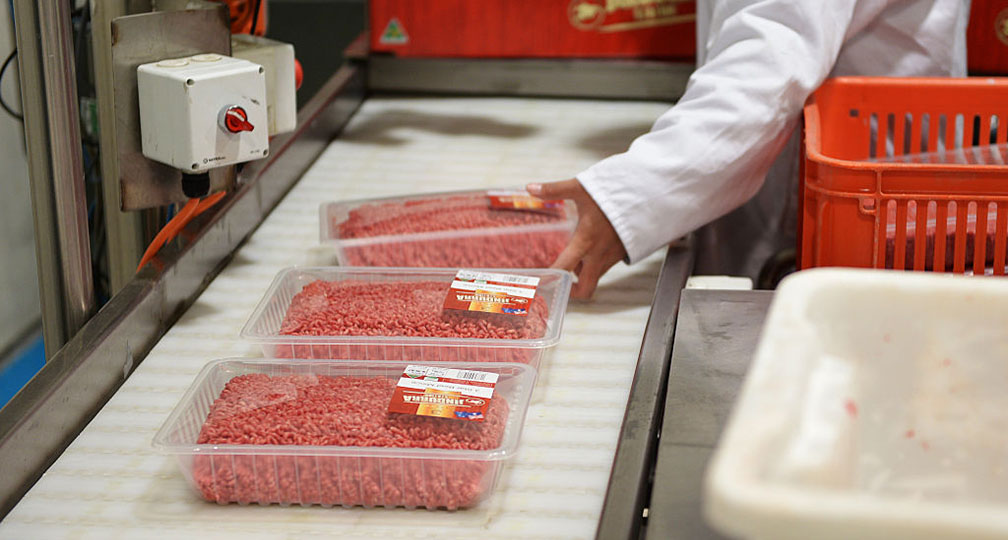Food traceability
The globalisation of the food trade, new industrial technologies and, above all, health crises of the late 20th century gave rise to doubts and questions among consumers. Traceability emerged as a response to these concerns and as a tool to manage health risks. It tracks the path of a food item from raw material to finished product, in order to be able to quickly remove it from sale or recall it in the event of problems.
Lambert, Annie, 2012. Industries agro-alimentaires. In : Poulain, Jean-Pierre, Dictionnaire des cultures alimentaires. pp. 722-732. Paris : PUF.
Fischler, Claude, 2001. L’omnivore. Paris : Éditions Odile Jacob.
Rastoin, Jean-Louis et Ghersi Gérard. 2010. Le système alimentaire mondial. Versailles : Éditions Quae.
Traçabilité des aliments - Europa
ec.europa.eu/food/animal/diseases/.../docs/factsheet_trace_2007_fr.pdf
Introduction à la traçabilité - Fonds de développement de la ...
www.fdta.qc.ca/userfiles/introduction_tracabilite-09-02.pdf
Garantir la sécurité sanitaire et la qualité des aliments. 2003
www.fao.org/docrep/006/y8705f/y8705f00.htm
A suspicious age
The globalisation of food trade, technological developments in the food processing industry and health crises such as Mad Cow Disease in the 1990s have raised a great deal of questions and concerns among consumers. It became necessary to manage health hazards posed by food and to maintain consumer confidence. Along with more specific labelling, the traceability of a food product means its journey can be followed and all the production, processing and distribution stages retraced.
In the mid-1990s, traceability became a legal requirement in the EU in the food and animal feed sectors. It is a precautionary measure which allows farmers and authorities to withdraw or recall a product if a problem or health risk arises. It also protects companies, since it identifies the root cause of the problem and determines accountability.
A complex operation
Traceability aims to determine the origin of the product and its ingredients, as well as their journey up to the final point of sale.
In practical terms, each product should be able to be identified and tracked throughout its preparation. This entails recording all the ingredients used in its production, as well as their origin and suppliers. Any treatments applied and quality controls must also be indicated. Locations, storage times and stock movement dates are also recorded. Furthermore, the traceability process is not just applied to the food product, but also to the materials used in manufacturing and packaging the product.
Companies must have flow archiving in place for five years and set up a structured system in order to be able to retrieve this information. They must be able to immediately provide the traceability of the production stages so that, in the event of a problem or health crisis, the authorities can piece together the full traceability of a product.
Traceability is obviously a delicate operation owing to the wide range of elements to be identified. The process is also further complicated by the geographical spread of these elements. In fact, the principle of traceability has opened up a new market, for the IT products and services necessary for implementing it.
A real case of successful traceability
In 2004, a routine health inspection at a farm in Holland revealed excessively high dioxin levels in the cows’ milk. Thanks to traceability, the authorities discovered that the source of the contamination was from clay which had been used in sorting potatoes. The clay had contaminated the potato peelings used for feeding the animals. More than two hundred farmers in Germany, Belgium, France and the Netherlands had received potentially contaminated potato peelings and could not sell their products.
Lambert, Annie, 2012. Industries agro-alimentaires. In : Poulain, Jean-Pierre, Dictionnaire des cultures alimentaires. pp. 722-732. Paris : Presses Universitaires de France.
Fischler, Claude, 2001. L’omnivore. Paris : Éditions Odile Jacob.
Rastoin, Jean-Louis et Ghersi Gérard. 2010. Le système alimentaire mondial. Versailles : Éditions Quae.
Commission européenne, 2007. Traçabilité des aliments - Europa [en ligne]. [Consulté le 15 février 2016]. Disponible à l’adresse :
ec.europa.eu/food/animal/diseases/.../docs/factsheet_trace_fr.pdf
FAO | Organisation des Nations unies pour l'alimentation et l'agriculturE, 2003. Garantir la sécurité sanitaire et la qualité des aliments [en ligne]. [Consulté le 15 février 2016]. Disponible à l’adresse : www.fao.org/docrep/006/y8705f/y8705f00.htm






